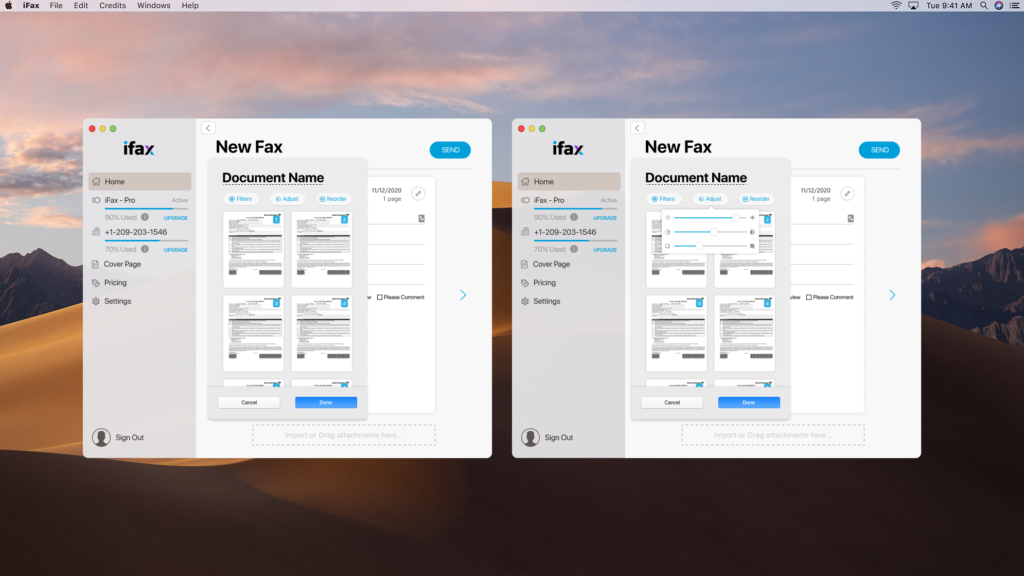Every business needs a secure and reliable system to manage files. If your goal is to improve workflow management, it would be best to rely on something other than your computer’s default file manager (e.g., File Explorer).
But first, you must understand what a file management system is and why your business needs it.
Table of Contents

What Is File Management Software?
The fundamental function of file management software is to store, organize, and manage files inside a computer or network of computers. Tracking specific documents also becomes effortless, with every change automatically saved and logged for easy reference and retrieval.
Feature-wise, file management systems can do more than organize and sort files by date or hierarchy. You can also perform specific actions like locking, hiding, and encrypting folders to improve data security. More importantly, there is no need to dig and pull up any document you need manually. A file management system lets you do it by simply typing specific filenames, keywords, and phrases.
File Management System Types and Features
There are several types of file management systems. Here’s a description of some of the main ones:
Hierarchical file system
According to PCMag, a hierarchical file system “organizes data and program files in a top-to-bottom structure.” To explain this type of file management system, Pressbooks uses the analogy of an inverted tree with the main trunk branching off into small branches and leaves.
The “main trunk” is drive C: or the root directory. It usually contains several “branches,” which you call directories (folders) in a computer. The directories also contain subdirectories (files), which can be likened to the “leaves” of the tree. A leaf cannot be part of other branches or other leaves. Similarly, each file in a hierarchical file system belongs to a specific folder, unless you create a copy (a different file) of it. Each file is identified by its unique path. When you delete a folder, all files placed in that folder are deleted as well.
The New Technology File System or NTFS in Windows and HFS+ in older versions of the MacOS use the hierarchical file system. But they also support other file management system features that enhance their functionality beyond the simple hierarchical structure.
Flat file system
Study.com offers a simple explanation of this type of file management system. A flat file database is a huge collection of data in which all the tables and records have no relation with other tables. There are no hierarchies here. It’s just one directory where all the files are located.
This system sounds chaotic and messy, but it has its uses. For example, if you need to look at a list of student names and phone numbers, it makes sense to place all this information in one Excel sheet. You don’t need multiple tabs because that would needlessly complicate things. If the data is simple, a simple file management system is also best. Early versions of CP/M (control program for microcomputers) and other early file systems use the flat file system.
Tag-based file system
This file management system uses tags or attributes instead of a directory tree to organize files. Compared to the hierarchical file management system, the tag system allows you to place content in multiple categories. By attaching “tags” or attributes to a specific file, you can add it to all folders. MacOS uses both hierarchies and tags in its file management system.
This file management system has advantages and disadvantages. It’s flexible, allowing you to place files in multiple categories. It also makes files easy to search. However, you need to manually assign tags to files, which can be time-consuming and prone to inconsistencies. When files increase, tags can become cluttered. You need to maintain them regularly to ensure they’re still relevant and valuable. In short, file management programs that use this system rely heavily on users following the tagging system.
Object storage
Google Cloud defines object storage as a modern data storage system that can handle large amounts of unstructured data, including email, web pages, audio files, sensor data, and other digital content. You can’t organize these data in a traditional file management system. Object storage responds to this challenge.
Object storage manages data in units or “objects” instead of files. Objects can be stored on-premises but are usually in the cloud. Each object contains the data itself, metadata, and a unique identifier. This object is placed in a flat data environment called a “storage pool.” The metadata can be customized, letting you add rich descriptions. Meanwhile, the unique identifier is typically a globally unique identifier (GUID) or a URL. You can easily find an object using the unique identifier and the metadata.

What Is the Best File Management Software? Our Top 5
Despite today’s abundance of tools and software for file management, you still need to choose one that best suits your needs. Here are the top choices for the best file management software:
1. DocuWare
DocuWare is a cloud-based file management system ideal for remote teams and businesses. It offers the most necessary features, such as document sharing, editing, recovery, and archiving. It’s also secure and compliant, making it the perfect choice for managing sensitive business records like contracts and project proposals. With the DocuWare Process Planner, you can create detailed organization maps and collaborate with others in real time.
2. LogicalDOC
LogicalDOC is a document management tool ideal for large companies and enterprises. This web-based software works on any web browser. It also has a user-friendly interface that supports tags, metadata, and bookmarking. LogicalDOC also uses OCR (optical character recognition), a feature that is quite useful for digitizing paper files. It also supports integrations to various applications, including Google Drive and DocuSign.
3. M-Files
M-Files uses artificial intelligence to categorize and search documents. Its content management platform is secure and reliable enough to handle multiple document processes. It encrypts files using advanced-level encryption and is compliant with major industry regulations. With M-Files, it is easy to automate tasks and eliminate redundancies. Meanwhile, its collaboration tools allow multiple users to collaborate in real time in a secure environment.
4. FileHold
FileHold is a feature-rich and secure file management software. It is ideal for businesses of all sizes as it offers plans with affordable upgrade options. With its user-friendly interface, FileHold makes it easier to keep track of various documents and retrieve information in just a few clicks. Its standard features include document scanning, tagging, metadata capture, linking, offline editing, and audit tracking.
5. AODocs
AODocs is a document management system with an intuitive user interface. Its cloud-based system supports easy integration via API. Plus, it allows real-time collaboration where multiple users can create and manage content directly from Google WorkSpace and Office 365. Since AODocs uses SSL encryption on top of Google Drive’s built-in security, it provides an added layer of protection to further secure files from malware, phishing, and other possible threats.

Bonus Entry: iFax
iFax is an ideal solution for businesses that want to fax files online. Our fax and file management service offers a user-friendly web-based interface that allows you to easily create, find, send, delete, and archive documents. Our business fax solutions comply with HIPAA, GLBA, and other privacy regulations, ensuring the privacy and security of sensitive information.
Benefits of Using a File Management System
A reliable file management system lets you easily manage, search, create, modify, and share files. It is often taken for granted, but leaving it out of any computer device can affect productivity.
Here are the benefits of using the best file management system software:
Easy file management
Imagine your computer as a messy room with papers scattered everywhere. A file management system is like having tidy shelves and labeled folders–it helps you keep your digital files organized. Think of it as a highly organized assistant who quickly finds exactly what you’re looking for.
Secure file sharing
Have you worried about accidentally sending a file to the wrong person? With a file management system, sharing files becomes safe, secure, and hassle-free. The best software includes security features such as access permissions and even HIPAA compliance, so you can rest easy when sending sensitive documents to others.
Eliminates redundant files
Duplicate files clutter your digital workplace and take up valuable space. With a file management system, you can say goodbye to wasted storage and enjoy a more efficient and faster device. For example, when you download duplicate files, the storage software might add “(1)” to warn you that you already have the file stored on your computer.
How to Choose the Right File Management Tool
Here are the simple steps to choosing the right software to manage your files:
Identify your needs
Assess the features that are best for your workflow and business size. Some businesses need a hierarchical file system but will also benefit from tag-based file search. Furthermore, check if the software is compatible with your device and can support large volumes of data in case your needs grow.
Evaluate features
Compare the features of each file management system. Look for features such as easy navigation, security, search functionality, collaboration, and security measures. Integration with other file management apps and software can also help you organize files more efficiently.
Try before you buy
If possible, take advantage of free trials and demo versions offered by the provider. Test the software’s features, customer service, and performance before you buy. You can also check user reviews from sites like Capterra and feedback from others in your circle.
Invest in the Best File Management Software
If you need a reliable file management solution, choose iFax. Our cloud-based fax platform keeps your important faxes organized and secure and your device clutter-free. Here are some of its best features:
- HIPAA compliant
- Free demo and 7-day trial
- Fax directly from Google Drive, Box, and Dropbox
- Create, modify, and delete documents as a team
- Access, organize, and send fax documents from anywhere
- Enable API integrations to EHR, CRM, ERP, and other third-party business systems
Ready to test iFax? Request a free demo.







